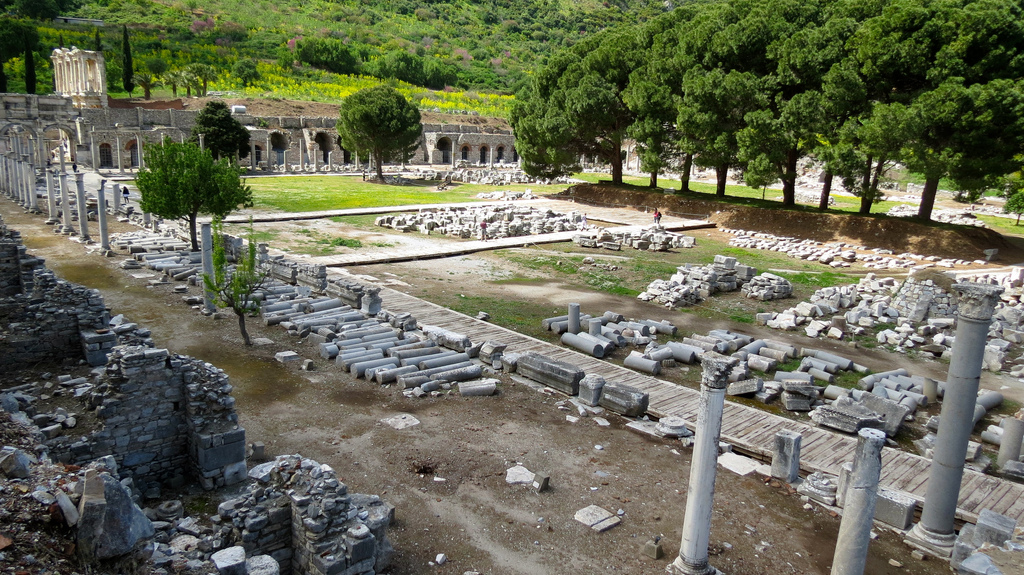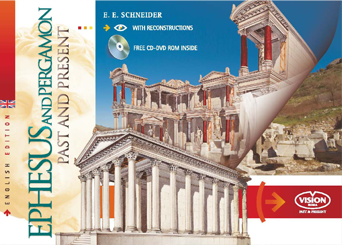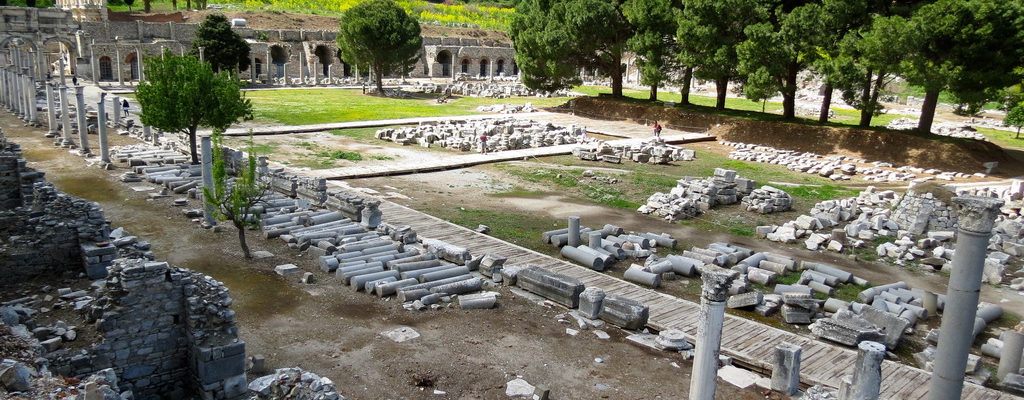Conceived under Lysimachus of Thrace, the upper Agora was completely rebuilt during the Augustan Age: it is from this period that the temple built on the western side of the square dates.
Its few remains make it possible, however, to reconstruct it as a prostyle, peripteral edifice (with 6 x 10 columns), and with a well for rituals created in its foundations. There are various hypotheses as to the cult practiced there: Isis or Dionysus, or perhaps the temple was dedicated to Augustus.
A sculptural cycle, believed to have been from a pediment, has been attributed to the building and was found reused in the decoration of the Fountain of Domitian; it depicts Ulysses, his companions and Polyphemus, and today is in the Ephesus Museum.
Also attributed to the Augustan Age is the construction of the so-called Double Temple, two small temples in antis on a single podium, preceded by a great staircase, which may most likely be identified as the temple to the Divine Caesar and Goddess Rome, a gift from Augustus during his stay at Ephesus in 29 B.C. to the Romans residing in Asia.
Between 4 and 14 A.D., the entire north side of the agora was occupied by an impressive two-story civil Basilica (length 164.80 meters) with a nave and two aisles, richly decorated and accessible from the square by means of four steps.
The discovery of numerous sections of the frieze carrying a bilingual inscription in Latin and Greek has made it possible to attribute its construction to a wealthy family of Ephesus, commemorated in numerous city monuments: the inscription commemorates, in fact, C. Sextilius Pollio, his wife Ofillia Bassa, and her son C. Ofillius Proculus.

© Photo credits by Erik Cleves Kristensen under CC-BY-2.0
The munificence of Sextilius Pollio made possible, during the same period, the construction of one of the numerous aqueducts that supplied water to the city. In the Greek text the monument is called “stoa basilike” (royal porch), while the Latin version refers to it as “basilica”.
But in reality it has nothing to do with the canonical Latin basilica; it is a very long stoa with a nave and two aisles, an example and result of architectural experiments between Greek and Roman architecture. The building annexed to the easternmost extremity of the basilica is the Chalcidicum, used for the imperial cult, as seen by the monumental seated statues of Augustus and Livia found on the site, and today kept in the museum.
At the northern corner of the agora was the Bouleuterion, a semicircular 1,500-seat hall where the meetings of the Boule, the city’s Senate, were held, and which also probably doubled as an auditorium (odeion) for concerts. In the administrative quarter of the Augustan neighborhood, the Prytaneion, the official seat of the Prytans (magistrates) and the city’s cult, was also erected: a large peristyle court, with Doric columns, led to the main hall, originally richly decorated, and probably used for public parties and banquets connected with religious events.
Many of the architectural elements of the Prytaneion – including the Doric columns on which there were inscriptions with long lists of the cult followers, the Curetes, in charge of the ceremonies – were recycled for use in the 4th century A.D. along the Curetes Street, which was named after them.

Do you want to know more about the history of Ephesus and Pergamon?
Check out our guidebook to Ephesus and Pergamon, with detailed history and Past & Present images of their greatest historical and archaeological sites.

